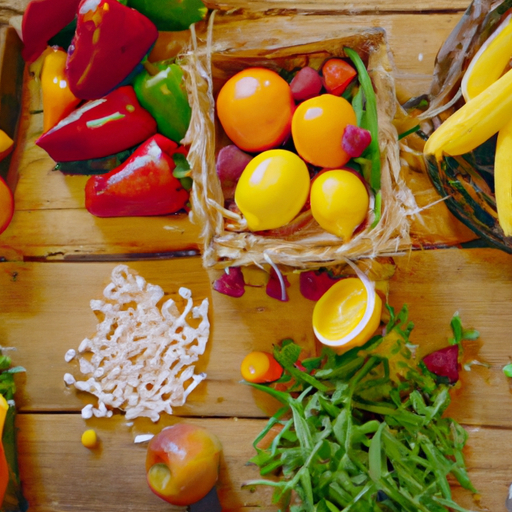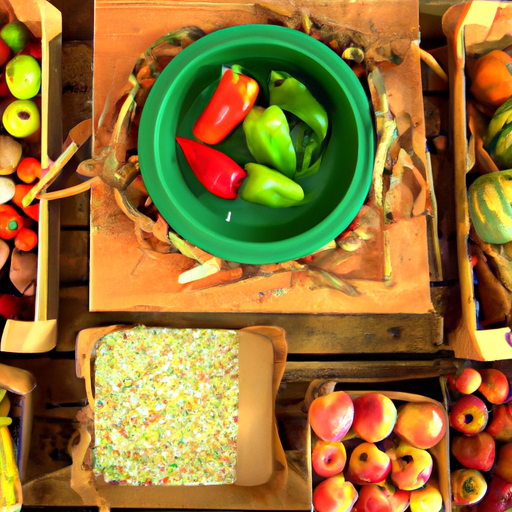
Exploring Local Food Banks: A Guide to Finding Free Food Resources
Are you struggling to put food on the table? Do you find yourself worrying about where your next meal will come from? If so, you’re not alone. Many individuals and families are facing food insecurity, unsure of how to access the resources they need. Fortunately, there are numerous free food resources available, including local food banks. In this article, we will explore how to find and access these valuable resources.
First and foremost, it’s important to understand what a food bank is and how it operates. Food banks are non-profit organizations that collect and distribute food to individuals and families in need. They work with local businesses, farmers, and community members to gather donations of food, which are then sorted and distributed to those who require assistance. Food banks play a crucial role in combating hunger and ensuring that everyone has access to nutritious meals.
To find a local food bank, start by conducting a simple internet search. Use keywords such as “food bank near me” or “free food resources in [your city or town].” This should provide you with a list of food banks in your area. Additionally, you can reach out to local community centers, churches, or social service agencies for information on nearby food banks. These organizations often have partnerships with food banks and can guide you in the right direction.
Once you have identified a food bank in your area, it’s important to familiarize yourself with their operating hours and any eligibility requirements. Some food banks may require proof of income or residency, while others have no such restrictions. It’s always a good idea to call ahead and inquire about their specific policies. This will ensure that you are prepared and have all the necessary documentation when you visit.
When you arrive at the food bank, you will likely be asked to fill out a brief intake form. This form collects basic information about you and your household, such as the number of people in your family and any dietary restrictions or allergies. This information helps the food bank staff determine the appropriate amount and type of food to provide you with. Rest assured that all information you provide is kept confidential and used solely for the purpose of assisting you.
Once you have completed the intake process, you will be able to access the food bank’s resources. Most food banks operate on a “shopping” model, where individuals can select the items they need from a designated area. This allows for choice and ensures that individuals receive food that aligns with their dietary preferences and cultural needs. Some food banks also offer additional services, such as nutrition education or cooking classes, to help individuals make the most of the resources available to them.
It’s important to note that food banks rely heavily on donations from the community. If you find yourself in a position to give back, consider making a donation to your local food bank. This can be in the form of non-perishable food items, monetary contributions, or volunteering your time. Every little bit helps and can make a significant impact on someone’s life.
In conclusion, if you are in need of free food resources, local food banks are an excellent option. By conducting a simple search, familiarizing yourself with their policies, and completing the intake process, you can access nutritious food to help alleviate food insecurity. Remember, you are not alone, and there are resources available to support you during difficult times.
Hidden Gems: Uncovering Community Gardens and Urban Farms for Free Food

Discovering Free Food Resources: A Comprehensive Map for Those in Need
Hidden Gems: Uncovering Community Gardens and Urban Farms for Free Food
In today’s challenging times, many individuals and families find themselves struggling to put food on the table. The rising cost of living, coupled with job losses and economic uncertainty, has left countless people in need of assistance. However, amidst these difficulties, there are hidden gems in communities across the country that offer a lifeline to those in need – community gardens and urban farms that provide free food resources.
Community gardens have long been a staple in neighborhoods, bringing people together to cultivate and harvest fresh produce. These gardens are not only a source of nutritious food but also serve as a space for community building and education. Many community gardens have recognized the need to support those facing food insecurity and have dedicated sections of their plots to growing food specifically for donation.
One such hidden gem is the Green Thumb Community Garden located in the heart of our city. This vibrant garden not only provides a serene escape from the hustle and bustle of urban life but also offers a variety of fresh fruits and vegetables to those in need. With rows of tomatoes, cucumbers, and peppers, this garden is a treasure trove of free food resources waiting to be discovered.
Another fantastic resource for free food is urban farms. These farms, often located in vacant lots or unused spaces, are transforming urban landscapes into thriving agricultural hubs. Urban farms not only provide fresh produce but also create jobs and promote sustainable practices. Many urban farms have recognized the importance of addressing food insecurity and have made it their mission to provide free food to those who need it most.
One urban farm that stands out is the City Harvest Farm, nestled in the heart of our city. This farm is a testament to the power of community collaboration and sustainable agriculture. With rows of leafy greens, root vegetables, and even a chicken coop, City Harvest Farm is a hidden gem that offers a bountiful harvest of free food resources.
Discovering these hidden gems is easier than ever, thanks to comprehensive maps that highlight community gardens and urban farms in your area. These maps provide a valuable resource for those in need, guiding them to the nearest free food resources. Whether you’re facing food insecurity or simply looking to support local initiatives, these maps are an invaluable tool.
One such map, the Food Resource Locator, is an interactive platform that allows users to search for community gardens and urban farms based on their location. With just a few clicks, users can find the nearest hidden gems and access the free food resources they offer. This user-friendly map is a game-changer for those in need, providing a comprehensive guide to the abundance of free food available in their communities.
In conclusion, community gardens and urban farms are hidden gems that offer a lifeline to those facing food insecurity. These spaces not only provide fresh and nutritious food but also foster community building and sustainable practices. With the help of comprehensive maps, discovering these hidden gems has never been easier. So, whether you’re in need of assistance or looking to support local initiatives, take a moment to explore the hidden gems in your community and uncover the free food resources they offer.
Navigating Government Assistance Programs: A Roadmap to Accessing Free Food Resources
Are you struggling to put food on the table? Do you find yourself worrying about where your next meal will come from? If so, you’re not alone. Many individuals and families are facing food insecurity, unsure of how to access the resources they need. Fortunately, there are government assistance programs available that can help you navigate this challenging situation. In this article, we will provide you with a comprehensive roadmap to accessing free food resources through government assistance programs.
The first step in accessing free food resources is to determine your eligibility for government assistance programs. These programs are designed to assist individuals and families who are experiencing financial hardship. Eligibility requirements vary depending on the program, but generally, they take into account factors such as income, household size, and assets. To find out if you qualify, you can visit the official website of your local government or contact your nearest social services office.
Once you have determined your eligibility, the next step is to apply for the appropriate government assistance program. The application process may vary depending on your location, but it typically involves filling out a form and providing supporting documentation, such as proof of income and identification. It’s important to complete the application accurately and thoroughly to ensure that your request is processed efficiently.
After submitting your application, it may take some time for your eligibility to be determined. In the meantime, it’s essential to explore other free food resources that are available in your community. Local food banks and pantries are excellent sources of free food for those in need. These organizations collect and distribute donated food to individuals and families who are struggling to make ends meet. To find a food bank or pantry near you, you can use online directories or contact your local social services office for assistance.
In addition to food banks and pantries, there are also government-funded programs that provide free meals to eligible individuals. One such program is the Supplemental Nutrition Assistance Program (SNAP), formerly known as food stamps. SNAP provides eligible individuals with an electronic benefit transfer (EBT) card that can be used to purchase food at authorized retailers. To apply for SNAP, you can visit the official website or contact your local social services office.
Another government-funded program is the National School Lunch Program (NSLP), which provides free or reduced-price meals to eligible students. If you have school-aged children, it’s important to inquire about this program at their school. The NSLP not only ensures that children receive nutritious meals during the school day but also offers assistance during weekends and school breaks through programs like the Backpack Program.
In conclusion, navigating government assistance programs can be a daunting task, but it’s essential for those in need of free food resources. By determining your eligibility, applying for the appropriate programs, and exploring other community resources, you can access the support you need to put food on the table. Remember, you are not alone in this journey, and there are resources available to help you through this challenging time.


